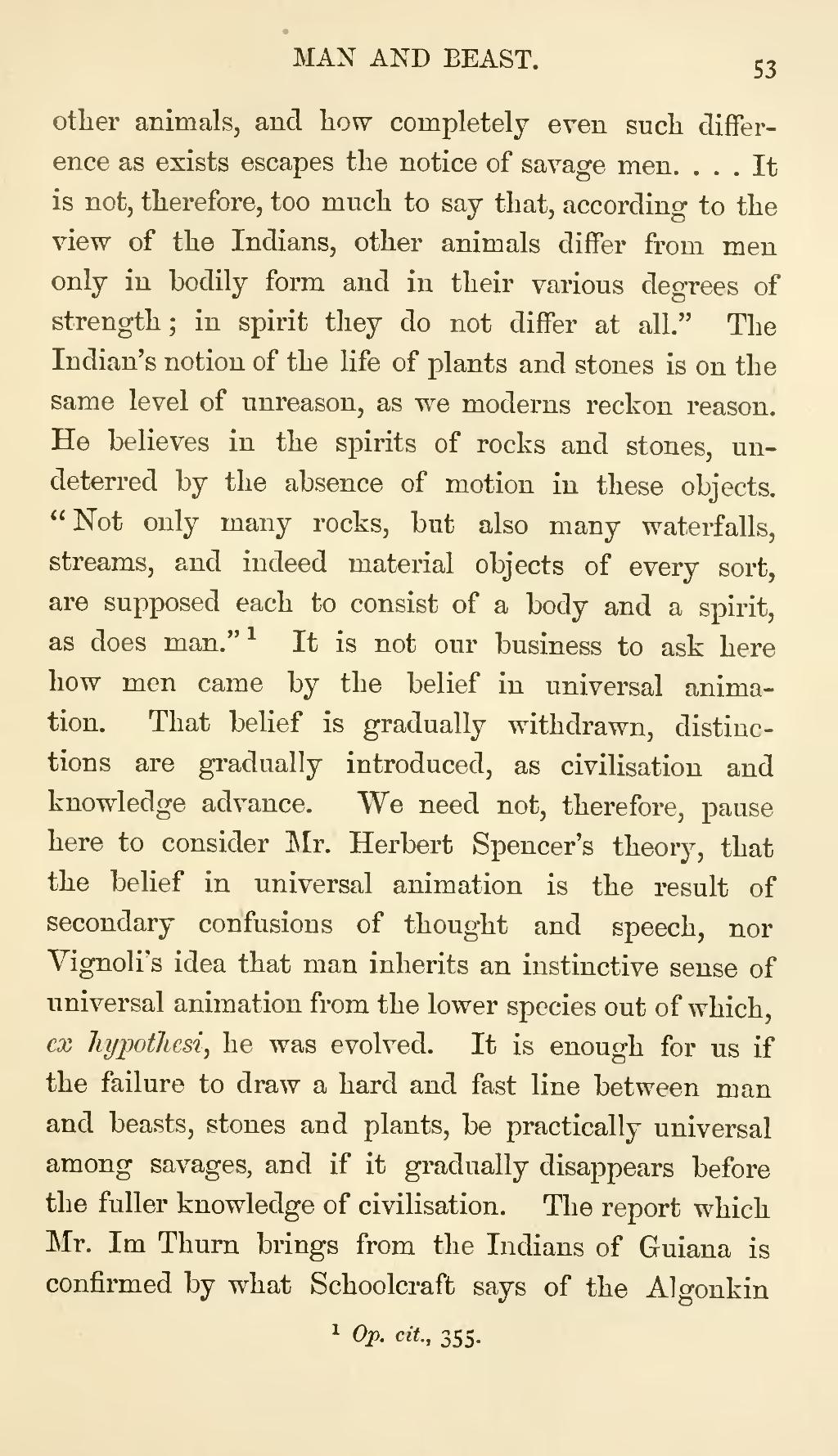other animals, and how completely even such difference as exists escapes the notice of savage men. . . . It is not, therefore, too much to say that, according to the view of the Indians, other animals differ from men only in bodily form and in their various degrees of strength; in spirit they do not differ at all." The Indian's notion of the life of plants and stones is on the same level of unreason, as we moderns reckon reason. He believes in the spirits of rocks and stones, undeterred by the absence of motion in these objects. "Not only many rocks, but also many waterfalls, streams, and indeed material objects of every sort, are supposed each to consist of a body and a spirit, as does man."[1] It is not our business to ask here how men came by the belief in universal animation. That belief is gradually withdrawn, distinctions are gradually introduced, as civilisation and knowledge advance. We need not, therefore, pause here to consider Mr. Herbert Spencer's theory, that the belief in universal animation is the result of secondary confusions of thought and speech, nor Vignoli's idea that man inherits an instinctive sense of universal animation from the lower species out of which, ex hypothesi, he was evolved. It is enough for us if the failure to draw a hard and fast line between man and beasts, stones and plants, be practically universal among savages, and if it gradually disappears before the fuller knowledge of civilisation. The report which Mr. Im Thurn brings from the Indians of Guiana is confirmed by what Schoolcraft says of the Algonkin
- ↑ Op. cit., 355.
